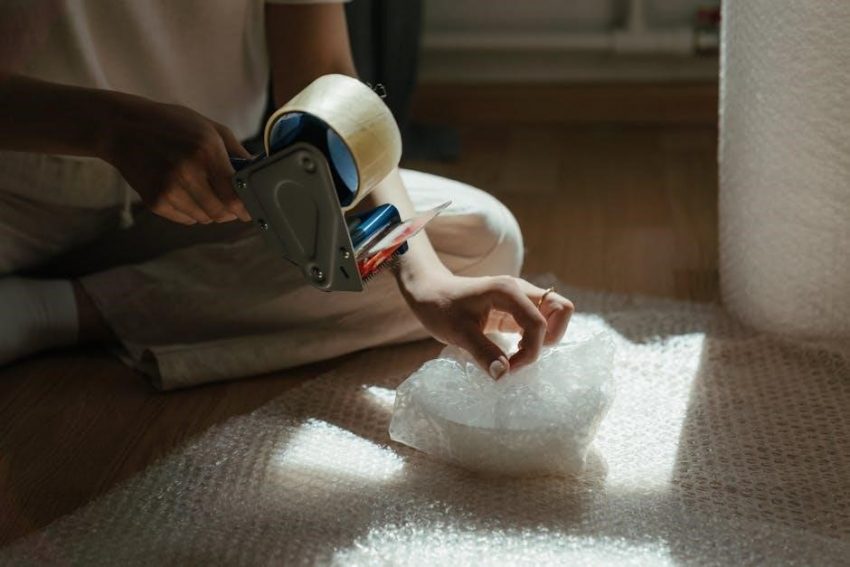The PleurX Drainage System is a minimally invasive catheter-based solution for draining excess fluid from the chest or abdomen, improving breathing and comfort for patients with pleural effusions or malignant ascites. Designed for home use, it offers a discreet and effective way to manage fluid buildup, reducing the need for repeated hospital visits and enhancing quality of life.
1.1 Overview of the PleurX Catheter
The PleurX catheter is a thin, flexible silicone tube designed for long-term drainage of excess fluid from the chest or abdomen. It is tunneled under the skin to minimize infection risk and features a unique valve system to control fluid flow. The catheter is placed by a healthcare provider and remains in place for repeated use. Its design allows for discreet and comfortable management of fluid buildup, enabling patients to perform drainage at home. The system includes a vacuum bottle and drainage line, ensuring safe and effective fluid removal. Regular use of the PleurX catheter can significantly reduce hospital visits and improve quality of life for patients with chronic fluid accumulation.
1.2 Indications for Use
The PleurX catheter is primarily indicated for the drainage of pleural effusions, which are abnormal fluid accumulations in the chest cavity, often causing breathing difficulties. It is also used to manage malignant ascites, a condition characterized by fluid buildup in the abdomen due to cancer. The system is designed for patients requiring repeated or long-term fluid drainage, offering a minimally invasive solution to improve respiratory function and reduce abdominal pressure. It is suitable for both chest and abdominal fluid drainage, providing effective relief and enhancing patient comfort. The PleurX system is particularly beneficial for patients with chronic conditions requiring ongoing fluid management.
1.3 Benefits of the PleurX System
The PleurX Drainage System offers numerous benefits, including reduced hospital stays and improved mobility for patients. Its minimally invasive design allows for easier management of chronic fluid buildup, enhancing comfort and quality of life. The system is discreet and portable, enabling patients to perform drainage independently at home. This reduces reliance on healthcare facilities and empowers patients to take an active role in their care. Additionally, the PleurX system minimizes the risk of complications associated with repeated needle aspirations, providing a safe and effective long-term solution for managing pleural effusions and malignant ascites.
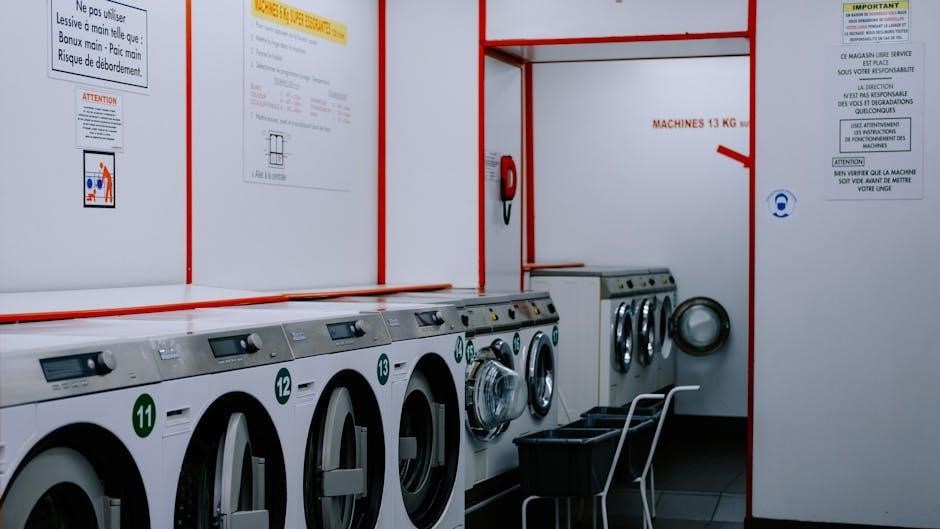
Preparing for the Drainage Procedure
Prepare by gathering all necessary supplies, washing hands thoroughly, and maintaining sterility. Ensure the patient is comfortable and properly positioned for the drainage process to begin safely.
2.1 Gathering Necessary Supplies
To begin, gather all essential supplies, including the plastic vacuum bottle with an attached drainage line, a procedure pack containing sterile items such as alcohol pads, gloves, and a valve cap. Ensure you have a self-adhesive dressing and a foam pad for securing the catheter post-drainage. Additionally, prepare the drainage instructions and any other materials specified in the kit; Organize all items in a clean, accessible area to streamline the process. Having all supplies ready ensures the procedure is performed efficiently and safely, minimizing delays and potential complications. Proper preparation is crucial for maintaining sterility and patient comfort throughout the drainage process.
2.2 Washing Hands and Maintaining Sterility
Thoroughly wash your hands with soap and warm water for at least 20 seconds before starting the drainage process. Dry them completely, then put on the sterile gloves provided in the procedure pack. Maintain sterility by ensuring all items from the procedure pack remain untouched by non-sterile surfaces. Use the alcohol pads to clean any potential contamination points. Avoid touching the catheter or drainage line with bare hands to prevent infection. Keeping the area clean and sterile is essential for a safe and effective procedure. Proper handwashing and sterility practices help protect both the patient and the catheter from potential infections or complications.
2.3 Preparing the Patient
Position the patient in a comfortable and accessible location, ensuring the catheter site is easily reachable. Explain the procedure to ease any anxiety and ensure understanding. Clean and disinfect the catheter valve area using the provided alcohol pads. Administer any prescribed pain medication or anxiolytics as directed by a healthcare provider. Drape the area with the sterile self-adhesive dressing from the procedure pack to maintain a clean environment. Ensure the patient remains still during the preparation to avoid catheter displacement. Verify that all supplies are within reach before proceeding. Proper patient preparation is crucial for a safe and effective drainage process.

Understanding the PleurX Drainage Kit
The PleurX Drainage Kit includes a vacuum bottle, drainage line, and procedure pack with sterile supplies. It enables safe and effective fluid drainage from the chest or abdomen.
3.1 Components of the Drainage Kit
The PleurX Drainage Kit contains essential components for safe and effective fluid drainage. It includes a plastic vacuum bottle with an attached drainage line, a procedure pack with sterile items such as self-adhesive dressings, alcohol pads, gloves, and a valve cap. Additional supplies like a foam catheter pad and a blue wrapping are also provided to ensure proper catheter care and maintenance. These components work together to facilitate comfortable and hygienic drainage, minimizing the risk of complications. Proper use of each item is crucial for maintaining sterility and ensuring the system functions correctly.
3.2 Proper Handling of the Vacuum Bottle
Proper handling of the vacuum bottle is crucial for effective drainage. Always ensure the bottle remains upright to maintain the vacuum seal. Before use, inspect the bottle for any damage or leaks. To initiate drainage, remove the support clip and push down the T-plunger to puncture the foil seal. Once drainage is complete, clamp the drainage line and carefully disconnect it from the catheter valve. Store the bottle securely to prevent accidental spills or damage. Handle the bottle with care to avoid compromising the vacuum, which is essential for proper fluid drainage. Always follow the manufacturer’s instructions for handling and maintenance.
3.3 Role of the Procedure Pack
The procedure pack is a sterile kit essential for the PleurX drainage process. It contains items like self-adhesive dressings, alcohol pads, gloves, and a valve cap, ensuring aseptic technique during drainage. The self-adhesive dressing secures the catheter, minimizing movement and reducing infection risk. Alcohol pads are used to clean the catheter valve before and after access, promoting sterility. Gloves prevent direct contact with the catheter and fluid, maintaining a sterile environment. The valve cap protects the catheter when not in use, preventing contamination. Together, these components ensure safe and effective drainage, adhering to infection control standards. Always use a new procedure pack for each drainage session to maintain sterility.

Step-by-Step Drainage Process
Clamp the catheter tubing, insert the access tip into the valve, release the pinch clamp, monitor fluid flow, and stop drainage when complete or the bottle is full.
4.1 Inserting the Access Tip into the Catheter Valve
To insert the access tip, hold the catheter valve with one hand and align the access tip with the valve opening. Gently push the tip into the valve until it clicks or seats properly. Ensure the tip is fully engaged to create a secure connection. Avoid forcing the tip, as this could damage the valve. Proper insertion is crucial to maintain sterility and prevent air entry. Once connected, the drainage line will begin transferring fluid into the vacuum bottle. Always follow the manufacturer’s instructions for correct technique to ensure safe and effective drainage.
4.2 Releasing the Pinch Clamp on the Drainage Line
To release the pinch clamp, locate it on the drainage line near the access tip. Pinch the clamp gently but firmly to open it, allowing fluid to flow into the vacuum bottle. Ensure the clamp is fully released to permit unrestricted flow. Once the clamp is open, fluid drainage will begin. Monitor the flow closely to avoid exceeding the recommended drainage limits. If resistance is felt, double-check the clamp’s position and ensure it is fully open. Proper release of the clamp is essential for effective drainage. Always refer to the provided instructions for guidance if unsure about the process.
4.3 Monitoring the Flow of Fluid
Monitor the flow of fluid closely during the drainage process. Ensure the drainage line is not kinked or blocked, as this can impede flow. Watch for air bubbles in the line, which indicate proper suction. If fluid flow slows or stops, check the line for any obstructions. If the vacuum bottle becomes full or the flow ceases, clamp the drainage line immediately to prevent air entry. Always follow the recommended drainage limits (1000mL for chest, 2000mL for abdomen). If discomfort or resistance is felt, stop the process and consult a healthcare professional. Proper monitoring ensures safe and effective fluid removal.
4.4 Stopping the Drainage Process
To stop the drainage process, first clamp the drainage line completely to prevent air from entering the catheter. Once the flow of fluid has ceased or the bottle is full, pull the access tip out of the catheter valve in a smooth, firm motion. Set the drainage line down while maintaining hold of the catheter. Clean the valve opening with an alcohol pad to ensure sterility. Secure the catheter with a foam pad to protect it from accidental dislodgment. If further drainage is needed later, the process can be resumed by reinserting the access tip. Always follow the recommended fluid limits and consult a healthcare professional if issues arise;

Safety Precautions During Drainage
Always handle the catheter valve gently to avoid damage. Prevent air entry into the catheter to maintain internal pressure. Ensure the drainage line is secure and free from kinks or twists to allow smooth fluid flow. Monitor for any signs of leakage or discomfort, and stop immediately if issues arise. Follow strict sterility practices to minimize infection risks. Never insert anything other than the access tip into the catheter valve to prevent damage or complications.
5.1 Avoiding Damage to the Catheter Valve
Handle the catheter valve with care to prevent damage. Never insert objects other than the access tip into the valve, as this can cause irreversible damage. Always use the pinch clamp to control fluid flow, avoiding excessive force that might harm the valve. Ensure the valve remains clean and dry to prevent contamination. Avoid bending or kinking the catheter, as this can compromise its integrity. If damage occurs, stop the procedure immediately and consult a healthcare professional. Proper handling and maintenance are crucial to ensure the valve functions correctly and maintains internal pressure, preventing air entry or fluid leakage during drainage procedures.
5.2 Preventing Air Entry into the Catheter
Preventing air entry into the catheter is critical to avoid complications. Always ensure the catheter valve is securely closed when not in use; Avoid inserting objects other than the access tip into the valve, as this can create openings for air. Keep the valve clean and dry to maintain sterility. If the catheter is damaged or the valve is compromised, air may enter, leading to potential infections or lung collapse. Use the pinch clamp correctly to control fluid flow without causing unnecessary pressure on the valve. If air entry is suspected, stop the procedure immediately and consult a healthcare professional to assess and address the issue promptly.
5.3 Handling the Drainage Line Properly
Proper handling of the drainage line is essential to ensure safe and effective fluid drainage. Always keep the line straight and avoid kinking, as this can disrupt fluid flow or cause damage. Use the pinch clamp to control the flow of fluid, but never pinch or twist the line excessively. Avoid touching the access tip or inserting any foreign objects into the catheter valve, as this can introduce bacteria or air. After draining, clamp the line securely and store it in a clean, dry place. Regularly inspect the line for signs of wear or damage and replace it if necessary. Always follow the manufacturer’s guidelines for handling and maintaining the drainage line to prevent complications and ensure optimal performance.
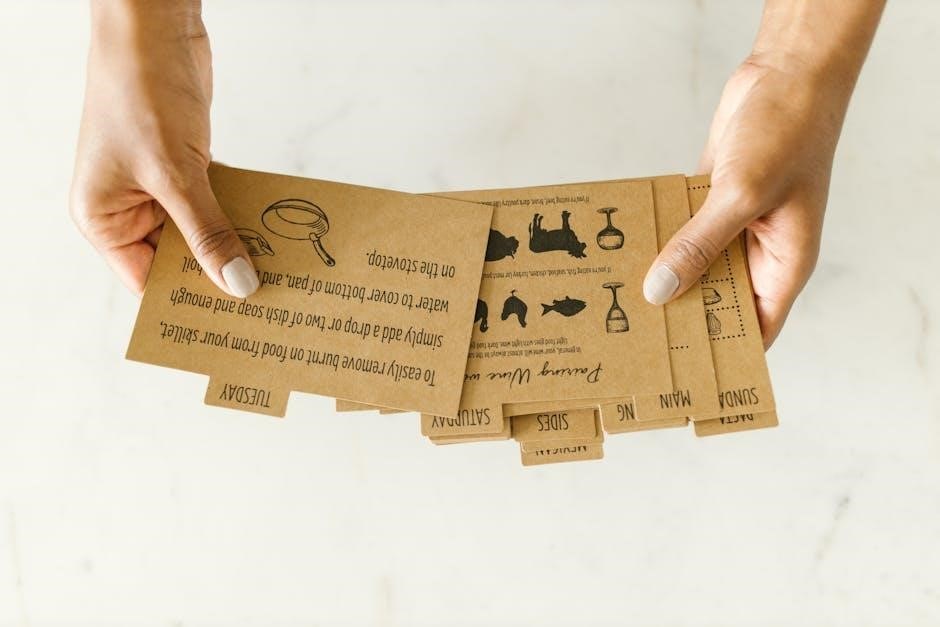
Post-Drainage Care
After draining, remove the access tip from the valve and clean the area with an alcohol pad to prevent infection. Secure the catheter with a foam pad to protect it from accidental dislodgment. Ensure the catheter is properly coiled and covered to maintain sterility and comfort. Regularly inspect the catheter site for signs of redness, swelling, or leakage, and report any concerns to your healthcare provider. Proper post-drainage care helps prevent complications and ensures the catheter remains functional for future use.
6.1 Removing the Access Tip from the Valve
After completing the drainage process, carefully pull the access tip out of the catheter valve using a firm, smooth motion. Ensure the tip is fully removed to prevent any residual fluid flow. Once removed, set the drainage line down on a clean surface, keeping the catheter valve secure in one hand. This step is crucial to maintain sterility and prevent air from entering the catheter. Always clean the valve opening with an alcohol pad after removing the access tip to reduce the risk of infection. Proper removal helps preserve the integrity of the catheter and ensures safe, effective future use.
6.2 Securing the Catheter with a Foam Pad
After removing the access tip, use the provided foam pad to secure the catheter. Place the foam pad around the catheter, ensuring it fits snugly to prevent movement or discomfort. This helps protect the catheter from accidental dislodgment and reduces irritation to the surrounding skin. Wrap the catheter gently around the foam pad, keeping it organized and secure. Properly securing the catheter is essential for maintaining its position and ensuring effective drainage in future sessions. Always follow the manufacturer’s instructions for securing the catheter to avoid complications and promote patient comfort.
6.3 Cleaning the Catheter Valve Opening
Cleaning the catheter valve opening is crucial to prevent infections and maintain proper function. Use a new alcohol pad to gently wipe the valve, ensuring no residue or bacteria remain. Cleaning should be done after each drainage session and whenever visible debris is present. Avoid touching the valve opening with your bare hands to minimize contamination risk. After cleaning, allow the area to air dry before covering it with a sterile dressing or cap. Proper cleaning ensures the valve remains functional and reduces the risk of complications, promoting a safe and effective drainage process.
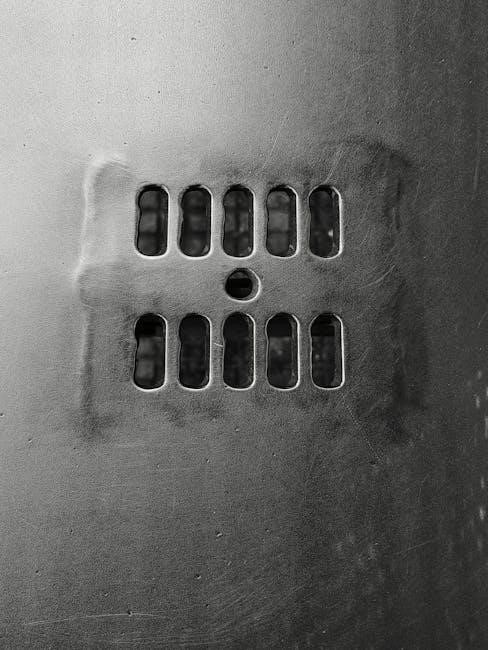
Special Considerations
Always follow maximum fluid drainage limits: 1000mL from the chest or 2000mL from the abdomen per session. Monitor for pain or discomfort and stop if flow suddenly ceases.
7.1 Maximum Fluid Drainage Limits
It is crucial to adhere to the recommended fluid drainage limits to ensure safety and avoid complications. For pleural effusions, do not drain more than 1000mL of fluid at one time. For ascites, the maximum limit is 2000mL per session. Exceeding these limits can lead to hypovolemia, hypotension, or other complications. Always monitor your body’s response during drainage. If you experience dizziness, nausea, or severe discomfort, stop the process immediately. If you reach the maximum drainage limit or notice fluid flow stopping, clamp the catheter tubing and consult your healthcare provider for further guidance. Adhering to these limits ensures safe and effective fluid management.
7.2 Managing Discomfort or Pain
Some discomfort or pain may occur during or after drainage, but it is typically mild and temporary. If you experience pain, stop the drainage process immediately and rest for a few minutes. You may take over-the-counter pain relievers, such as acetaminophen, to help alleviate discomfort, but consult your doctor first. Deep breathing exercises can also help reduce anxiety and discomfort. If pain persists or worsens, contact your healthcare provider for guidance. It is important to balance comfort with the need to drain fluid effectively, ensuring proper management of your condition while maintaining your well-being.
7.3 When to Stop Drainage
Stop drainage immediately if you experience severe pain, shortness of breath, or lightheadedness. Drainage should also cease when the flow of fluid slows to a drip or stops completely, or if the vacuum bottle is full. Never drain more than 1000 mL from your chest or 2000 mL from your abdomen in one session. If you feel resistance while draining or notice air entering the catheter, stop the process. Always monitor the drainage volume and your physical condition. If unsure or if concerns arise, consult your healthcare provider for guidance to ensure safe and effective drainage.
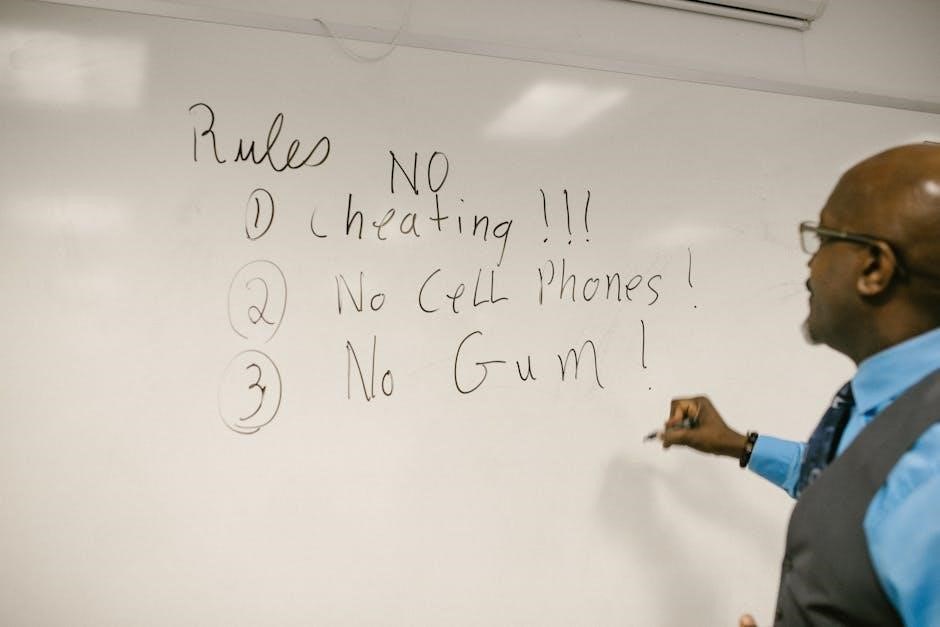
Troubleshooting Common Issues
Identify and address issues like slow drainage, blockages, or air entry. Check for kinks in the tubing, ensure the pinch clamp is fully open, and avoid air entry. If problems persist, consult a healthcare professional for assistance.
8.1 Slow or No Fluid Flow
If fluid flow is slow or stops, check for kinks or blockages in the drainage line. Ensure the pinch clamp is fully open and not obstructing flow. Verify that the access tip is securely inserted into the catheter valve. Air entry into the system can also prevent fluid flow; ensure the valve remains submerged in fluid during drainage. If the issue persists, gently flush the catheter with sterile saline solution to clear any blockages. Avoid using force, as this could damage the catheter. If flow does not resume, consult a healthcare professional for further assistance or to check for potential catheter malfunction.
8.2 Leakage Around the Catheter
Leakage around the catheter may occur due to improper placement or dislodgment. If leakage is observed, immediately clamp the catheter tubing to prevent further fluid loss. Inspect the catheter and valve connections to ensure they are secure and not damaged. Clean the area around the catheter with an alcohol pad to maintain sterility. If leakage persists, apply a sterile dressing or self-adhesive dressing provided in the procedure pack. Avoid introducing air into the catheter, as this could exacerbate the issue. Consult a healthcare professional for assistance, as the catheter may need to be adjusted or replaced to prevent further complications.
8.3 Difficulty Removing the Access Tip
If difficulty arises when removing the access tip from the catheter valve, gently pull the tip while holding the valve steady. If resistance is felt, slightly wiggle the tip back and forth to dislodge it. Avoid using excessive force, as this could damage the valve or catheter. Clean the area with an alcohol pad to maintain sterility. If the tip remains stuck, do not attempt to force it, as this could cause catheter damage or allow air entry. Instead, consult a healthcare professional for assistance to prevent complications and ensure proper removal. Always follow the provided instructions for safe handling of the catheter system.

Maintenance and Storage
Regularly clean and dry the catheter valve. Store unused supplies in their original packaging. Dispose of used materials properly to maintain hygiene and prevent infection.
9.1 Caring for the Catheter

Proper catheter care is essential to prevent infections and maintain functionality. After each drainage, clean the catheter valve with an alcohol pad. Always clamp the catheter tubing when not in use to prevent air entry. Secure the catheter with a foam pad to avoid irritation or displacement. Regularly inspect the catheter and surrounding skin for signs of redness, swelling, or leakage. If any issues arise, consult a healthcare professional immediately. Proper care ensures the catheter remains effective and minimizes complications, allowing for safe and efficient fluid drainage at home.
9.2 Storing Unused Supplies
Unused supplies should be stored in a clean, dry place away from direct sunlight and extreme temperatures. Keep the vacuum bottle, drainage line, and procedure pack sealed in their original packaging until ready for use. Ensure all items remain sterile and are not damaged. Store supplies in an accessible location to avoid delays during drainage procedures. Check expiration dates of sterile items and replace them as needed. Never reuse or share supplies, as this can compromise sterility and safety. Proper storage ensures all components remain functional and ready for use when needed, maintaining the effectiveness of the PleurX system.
9.4 Disposing of Used Materials
After completing the drainage procedure, dispose of all used materials properly to maintain hygiene and safety. Place the used vacuum bottle, drainage line, and any packaging materials into a biohazard waste bag. Seal the bag securely to prevent leakage. Do not reuse any components, as this can compromise sterility and safety. Ensure all sharps, such as needles, are disposed of in a puncture-proof container if applicable. Check local regulations for proper disposal of medical waste. Proper disposal helps prevent contamination and ensures environmental safety. Always follow healthcare guidelines for managing used medical supplies to maintain a clean and safe environment.
The PleurX Drainage System offers an effective solution for managing fluid buildup, enhancing patient comfort and reducing hospital stays. Always follow instructions carefully and consult healthcare professionals for guidance.
10.1 Summary of Key Steps
Effectively using the PleurX Drainage System involves several key steps: preparing supplies, washing hands, and maintaining sterility. Insert the access tip into the catheter valve, release the pinch clamp to initiate flow, and monitor fluid drainage. Stop the process by clamping the tubing and removing the access tip. Secure the catheter with a foam pad and clean the valve with alcohol. Adhere to maximum fluid limits (1000mL for chest, 2000mL for abdomen) to avoid complications. Properly store unused supplies and dispose of used materials safely. Always follow the provided instructions and consult a healthcare professional if issues arise.
10.2 Importance of Following Instructions
Adhering to the PleurX Drainage System instructions is crucial for safe and effective fluid drainage. Proper techniques prevent complications such as air entry, catheter damage, or fluid leakage. Following guidelines ensures patient safety, maintains catheter functionality, and avoids unnecessary medical interventions. Deviating from instructions can lead to discomfort, infection, or system malfunction. Consistent compliance with the provided steps guarantees optimal outcomes and prolongs the catheter’s lifespan. Always refer to the official drainage instructions for detailed guidance and consult healthcare professionals for any uncertainties or concerns.
10.3 Consulting a Healthcare Professional
Consulting a healthcare professional is essential for the safe and effective use of the PleurX Drainage System. They provide personalized guidance, address concerns, and ensure proper technique to avoid complications; Regular follow-ups help monitor catheter function and overall health. If issues arise, such as pain or leakage, seek immediate medical advice. Your healthcare provider can also clarify any questions about the instructions or system maintenance. Their expertise ensures optimal outcomes and minimizes risks associated with drainage procedures. Always rely on professional advice for managing your PleurX Drainage System effectively.
